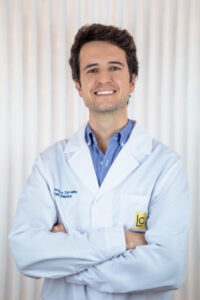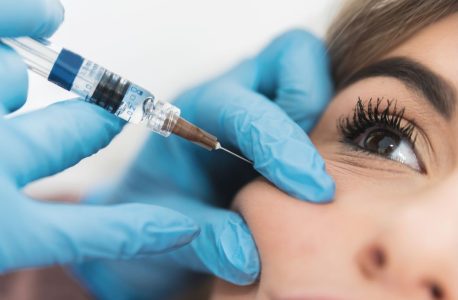The journey of motherhood is an incredibly rewarding period, but it can also bring significant changes to a woman’s body, especially in the abdominal region.
It’s good to be aware that these bodily changes are perfectly normal and are part of the process of bringing a new life into the world. However, it is also understandable that some women feel some loss of self-esteem and want to recover their body quickly in order to regain their confidence.
In this article, we will discuss effective strategies for losing postpartum belly fat and we will also talk about Mommy Makeover ® surgery, an option offered by Living Clinic to help mothers quickly regain their full self-esteem and appearance.
Postpartum weight loss
As mentioned earlier, the desire to lose weight after giving birth is a fairly common and understandable concern.
Pregnancy and childbirth can lead to significant changes in the woman’s body, including weight gain, increased fat and sagging skin, stretched abdominal muscles and changes in the breasts. Therefore, it is natural that many women long to get back to the shape they had before pregnancy.
However, it is important to approach this goal in a healthy way, considering the body’s needs during the postpartum period and respecting the recovery process.
The body needs time to recover after giving birth, regardless of whether it was a natural birth or a C-section. The changes to the body occurred over several months and therefore it is unrealistic to expect everything to return to normal in a matter of weeks. Furthermore, women should bear in mind that their skin may not return to its original appearance. These changes vary greatly from woman to woman.
However, once a woman feels emotionally and physically ready, she can start small habits that will bring her closer to the body she wants.
Tips on healthy ways to lose the postpartum belly fat
1. Define realistic objectives
It is important to set realistic goals that respect the recovery time. Rushing this process can lead to postpartum complications and delay recovery or even cause major complications.
2. Recover your physical strength with mindful nutrition
Restrictive diets are never recommended to lose weight in a healthy way, but in a postpartum period, more than ever, we recommend that you be especially careful with the type of diet you eat.
Make sure you include a variety of nutrient-dense foods such as vegetables, fruits, lean proteins, whole grains and healthy fats in your meals and eat several meals throughout the day.
A balanced diet is essential for postpartum recovery, especially for breastfeeding women, whose bodies spend a lot of energy producing milk.
The Living Clinic nutritionist, with extensive experience in nutrition during pregnancy/postpartum and weight loss, can help you (online or in-person consultation, in Porto).
3. Keep well hydrated
Drinking water is essential for postpartum recovery and maintaining a healthy metabolism. Furthermore, drinking water frequently can help you in the following ways:
- In the healing of incisions and tissue regeneration after childbirth;
- If you breastfeed, staying hydrated is essential to maintain adequate breast milk production;
- Adequate hydration can help prevent constipation, a common problem after childbirth.
4. Moderate exercise
Postpartum physical exercise is very important. Start with low-impact exercise, like light walking. As your body strengthens, you can gradually incorporate resistance exercises and cardiovascular training.
5. Strengthen the abdomen and recover from abdominal diastasis
Abdominal diastasis is the separation of the rectus abdominis muscles, which can occur especially during pregnancy due to the expansion of the uterus.
This condition can cause abdominal weakness, back pain and affect the appearance of the abdomen. If you suspect or have been diagnosed with abdominal diastasis, here are some general guidelines to correct or minimize the condition:
- Before beginning any exercise program or treatment, it is essential to consult a physician who specializes in postpartum health. They can assess the extent of the diastasis and provide personalized guidance based on your physical condition;
- There are specific exercises that can be recommended to strengthen the core muscles and reduce diastasis. Contraction of the transverse muscles and pelvic elevations may be helpful;
- Maintaining good posture during daily activities can help prevent excessive pressure on your abdominal muscles. Avoid movements that cause tension in the abdomen, such as incorrectly lifting heavy objects;
- During the recovery period, a postpartum girdle may be recommended to provide additional support to the abdominal muscles and aid recovery. However, it is important to consult a specialist, as straps can have the opposite effect if improperly used;
- As your condition improves, you can gradually incorporate core-strengthening exercises into your routine. Increasing the intensity progressively will help strengthen your muscles safely.
Recovery from abdominal diastasis can take time. Be patient and follow the guidance of a healthcare professional. Above all, focus on taking care of your health and well-being.
6. Good sleep helps in losing postpartum weight!
Like water, sleep is essential for postpartum recovery and maintaining a healthy metabolism. Try to rest whenever possible, even if it is in short intervals.
This new phase is one of many adventures. You will discover wonderful things about yourself and your baby. But remember, only a healthy mother will be able to overcome all the challenges that motherhood brings!
Surgical solutions to reduce postpartum abdominal weight
Surgery can be a good complement to previous strategies, and a more efficient way to lose excess localized fat and sagging in the postpartum belly.
Typically, the main concerns are related to the breasts and belly:
In the breast, resulting from weight gain and breastfeeding, there may be a significant increase in breast volume (which, in itself, does not decrease with weight loss), excess skin (which gives the breast a sagging appearance) or a mammary gland atrophy.
On the belly, what usually bothers most women is sagging and excess skin, stretch marks, the bulging appearance of the abdomen, and changes in the shape of the navel.
These changes can be significant, making the woman feel very dissatisfied and seek a quick recovery.
For this reason, Mommy Makeover ® is a surgery that has been in increasing demand. This is a combination of cosmetic/plastic surgery procedures performed to help women recreate the body they had before becoming pregnant.
You can, in a single surgery, treat both areas (belly and breast):
The most commonly used procedures in this surgery are abdominoplasty (to remove redundant skin and restore firmness in the abdominal area) and breast surgery, which may include a breast lift (Mastopexy) and/or breast augmentation (or Augmentation Mammoplasty). Liposuction can also be included to help sculpt the body.
However, it is important to note that this type of surgery should not be performed immediately after birth. It will always take several months before it is recommended, as the abdominal muscles and tissues need recovery/healing time.
Additionally, many women choose to breastfeed their babies after giving birth. Breastfeeding can affect the shape of the breasts and therefore any intervention on the breasts should only take place after breastfeeding has concluded.
A mommy makeover is recommended when no further pregnancy is considered, not because there is any incompatibility with another pregnancy, but because the cosmetic results obtained may be compromised.
Living Clinic works collaboratively with each patient to create a personalized plan that meets their unique needs.
If you are looking for any of these procedures, schedule an appointment with the Plastic Surgeon at Living Clinic, in Porto.
Plastic Surgeon

Dr. Francisco Martins de Carvalho is a specialist in Plastic, Reconstructive and Aesthetic Surgery. He completed his degree in Medicine at the School of Medicine of the University of Oporto and the Internship in Specific Training in Plastic, Reconstructive and Aesthetic Surgery took place at Hospital de São José (Lisbon) and Hospital de São João (Oporto).
Currently, he is also a plastic surgeon at the Hospital de São João – Oporto, and a Invited Lecturer at the School of Medicine of the University of Oporto.
In the field of cosmetic surgery, he has a special interest in facial cosmetic surgery, breast cosmetic surgery, body contouring surgery and vaginal cosmetic surgery.
Schedule an appointment
- Do you want to know more information about a treatment?
- Do you want to know more about Living Clinic?
- Do you want our team’s opinion?
- Do you want to make an appointment?






